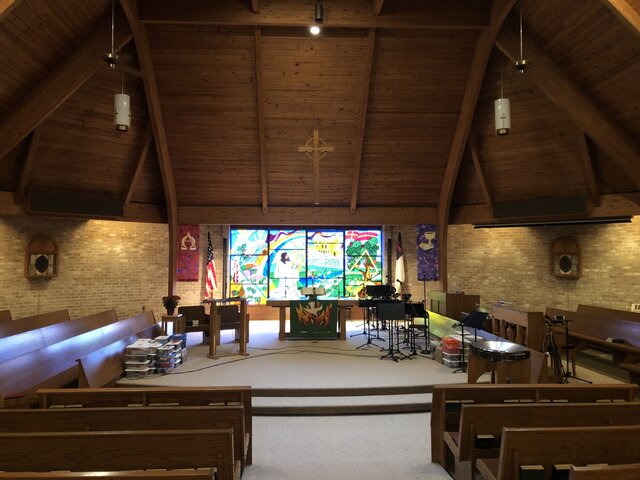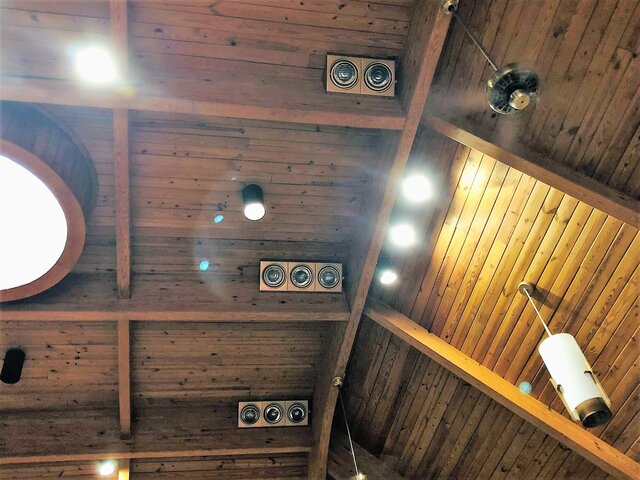I was asked to try to figure out a solution for a lighting problem at a local church. The sanctuary, which was built in 1994, is a 50' diameter circle in a 3/4 round configuration. with a stained glass window at the back of the stage area. The pastor either stands at the pulpit stage right in front of the American flag of behind the altar in the center. Both are about 2/3 of the way back from the front. They had minimal issues before COVID livestream but now are trying to find a fix that will allow the pastor to be seen against the window. The second picture shows one of 2 sets of 8 fixtures with Par38 Medium Side prong lamps that haven't worked for 20+ years (allegedly a cable was cut while installing a roof). The furthest set of three on the right is about 30 feet away at a 40 degree angle from the Pulpit.
My question: Is it worth it to rewire these lights replacing the lamps with $70-$100 LED floods? or Is there a better way to get Key and Fill light on the pastor so the camera doesn't zone in on the window.
Thanks
My question: Is it worth it to rewire these lights replacing the lamps with $70-$100 LED floods? or Is there a better way to get Key and Fill light on the pastor so the camera doesn't zone in on the window.
Thanks




